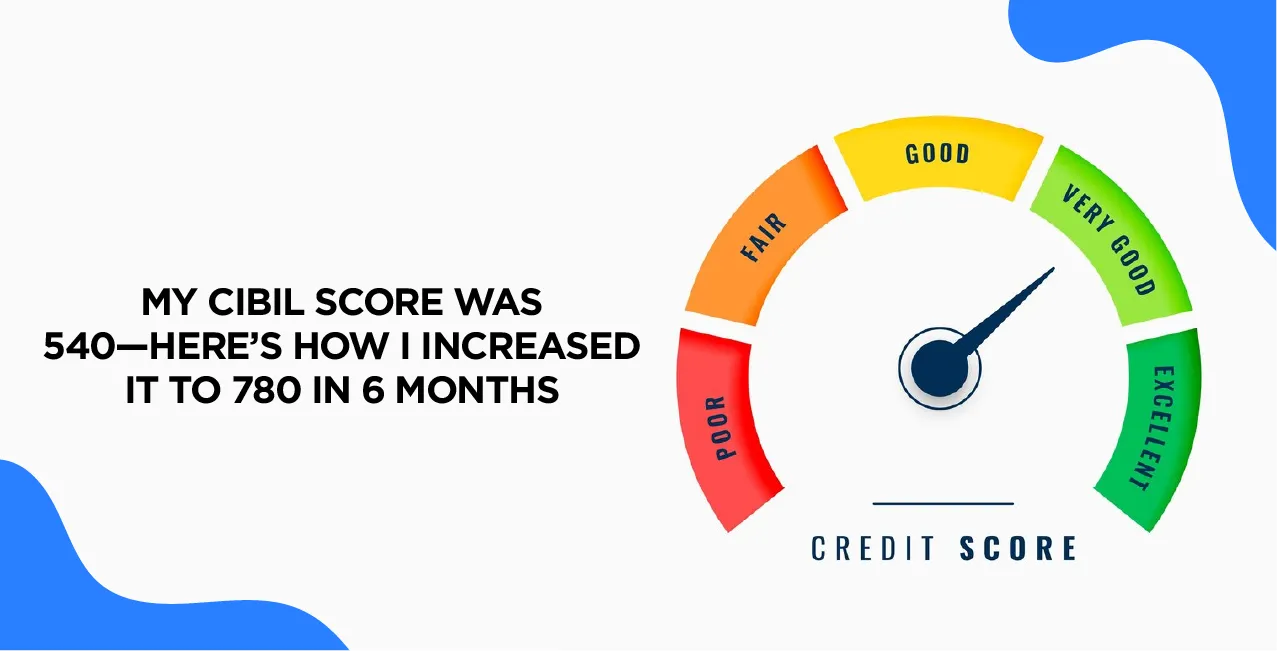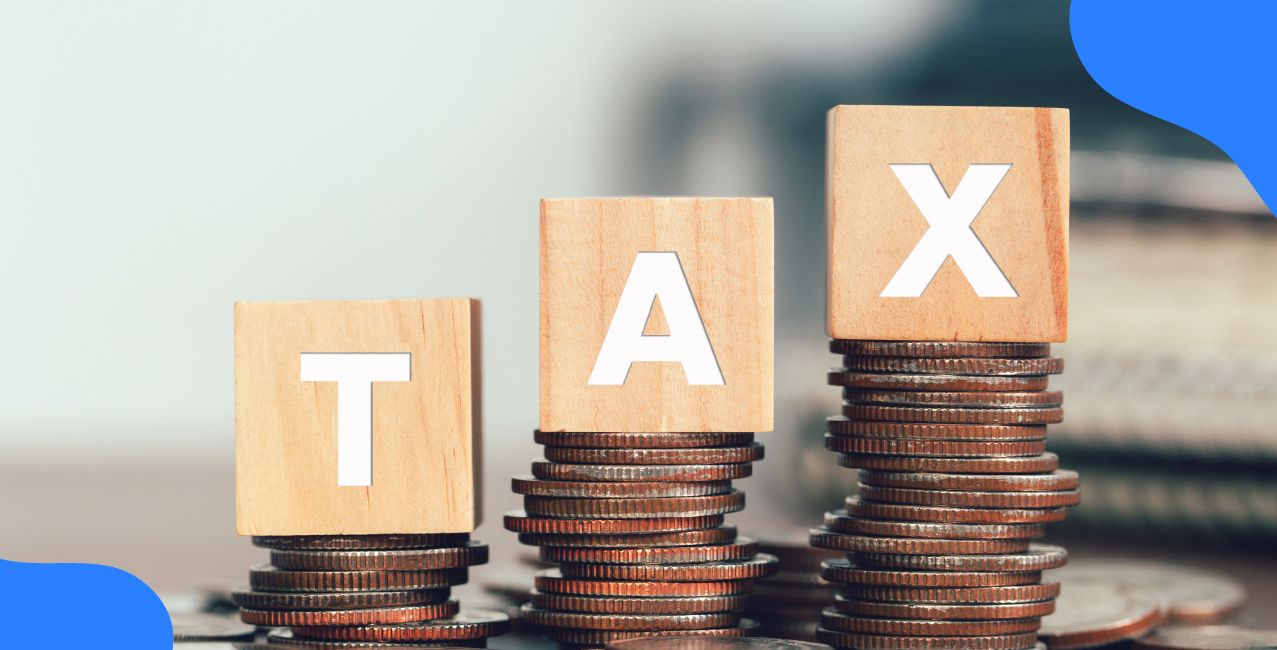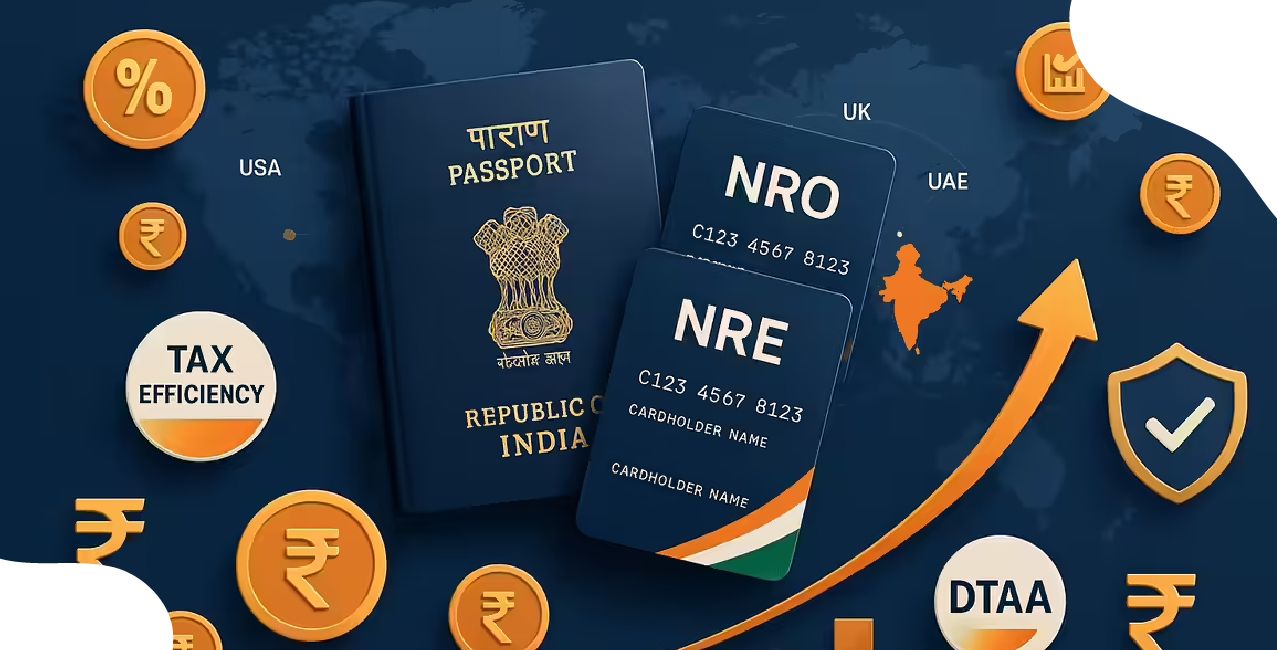
Author
LoansJagat Team
Read Time
10 Min
22 Apr 2025
My CIBIL Score Was 540—Here’s How I Increased It to 780 in 6 Months
"Madam, aapka CIBIL score sirf 540 hai; aapko credit card milna mushkil hai." The bank executive’s words hit me harder than a Monday morning alarm.
I had just begun my first job, earning ₹40,000 a month, and was confident that getting a credit card would be as simple as ordering a coffee. But no—my CIBIL score was a mere 540, and the rejection felt like a slap.
"Maine toh koi udhaar bhi nahi liya, phir bhi yeh score itna low kyun?" I was demented.
"Wahi toh, credit history banana padta hai," The man smiled as he replied. That’s when I realised that finance wasn’t just about savings; it was a game of strategy.
I perceived it as a challenge, and within 6 months, I improved my score to 780. If you're in a similar situation, don't panic! This article will deconstruct exactly what I did so you can fix your CIBIL score and acquire financial freedom!
Understanding CIBIL Score—Why It Matters?
Consider your CIBIL score (300 to 900) and your financial Aadhaar card—wherever you are, it accompanies you! Above 750, banks roll out the red carpet, showering you with loans and credit cards with the best offers. But if it falls below 600, it's like being ghosted—loan approvals disappear, and interest rates skyrocket.
Lenders do not give money for free; they verify this score to determine if you are a 'safe bet' or a 'loan risk'.
Therefore, if you desire financial doors to open with ease, having your CIBIL score in order is not negotiable!
540? Bhai, Yeh Toh Red Zone Hai!
A CIBIL score of 540 is equivalent to scoring 30% in an exam—haan, pass toh ho gaye, but no scholarships or top universities. I learnt this the hard way when my loan applications were being rejected quicker than a last-minute Tinder swipe.
High interest rates, no negotiation power, and even a "Sorry, ma'am, not eligible" for a simple credit card—it was a financial nightmare.
The sense of urgency to correct this was genuine, and I was aware I had to work extra hard to score higher.
Read More – How to Increase CIBIL Score – Step-by-Step Improvement Guide
Step 1: Checking and Understanding My CIBIL Report
First things first, I went straight to the TransUnion CIBIL website and downloaded my CIBIL report. And the shock was genuine. Are outdated loans reflected as not paid? Erroneous details? It felt as if someone had manipulated my financial report card.
But the catch is you can't repair what you don't realise. Checking your CIBIL report is step one to identifying what's dragging your score down. The moral of the story is don't simply presume—confirm, define, and correct!
How I Repaired It (Numerical Breakdown)
Action | Points Gained | Description |
Disputed Errors | +50 | Disputed the wrong loan info on the CIBIL portal. I fixed the error in 45 days. This increased my score. |
Paid Off Pending Dues | +70 | Paid off two small past-due amounts (₹4,500 total) on an old credit card, improving my score. |
Lower Credit Utilisation | +60 | My credit card use went from over 70% to under 30% of ₹1,00,000 limit, thus improving my score. |
On-Time Payments | +40 | Paid EMIs and bills on time for six months without delays or minimum payments. |
Diversified Credit Mix | +20 | Took a ₹20,000 personal loan and repaid it in 3 months, demonstrating credit management ability. |
With six months of diligent effort—settling dues, prudent credit management, and financial discipline—my CIBIL score increased proactively from 540 to 780, and better loan deals and financial prospects began to open up.
Step 2: Error Correction—Galti Toh Machine Se Bhi Hoti Hai!
Credit bureaus also make errors, and such errors can lower your CIBIL score. Stale loan information, wrong late payments, or pending accounts may do your finances silent harm.
I acted fast:
- Raised a Dispute: Registered on the CIBIL website, raised a dispute against wrong loan information, and uploaded documents in support.
Followed Up: Banks and credit bureaus are slow to respond. I checked my dispute status weekly and even called customer service when necessary.
- Resolved in a Month: In 30 days, my report was fixed, and my score increased by 30 points.
The moral is easy—if there's an error in your report, don't stress. Correct it, follow up regularly, and your score will increase.
Step 3: Timely Bill Payments—The Ultimate Game-Changer
I ensured that all EMIs, credit card bills, and utility bills were paid before the due date. A single late payment can lower your CIBIL score, as payment history accounts for 35%.
To remain on track, I:
- Set Up Auto-Pay: Connected my bank account to auto-debit credit card bills and EMIs.
- Used Reminders: Create calendar reminders several days before the due date.
- Cleared Full Credit Card Dues: I paid off my entire credit card balance, rather than just the minimum, thereby avoiding interest and improving my financial health.
Breakdown of Numerical Impact on My CIBIL Score
Action Taken | Impact on Score | Timeframe |
I paid my EMIs and credit card expenses in full and within the scheduled time. | +40 points | 6 months |
Avoided "minimum due" payments on credit card | +15 points | 3 months |
Set up auto-pay and reminders to prevent missed payments | +10 points | 2 months |
Cleared past-due payments from previous months | +20 points | 1 month |
Overall Score Improvement from Making Timely Payments: +85 points
Step 4: Reducing Credit Utilization—‘Swag Kam Karo, Score Badhao’
It feels wonderful to swipe your credit card generously, but excessive usage can subtly damage your CIBIL score. Credit utilisation represents 30% of your credit score and indicates to lenders how much of your available credit you use.
If you use more than 30% of your available credit, lenders consider you to be high risk, and your credit score will go down.
Numerical Breakdown of Impact on My CIBIL Score
Action Taken | Before Change | After Change | Impact on Score | Timeframe |
Reduced credit utilization from 70% to below 30% | 70% utilization (₹70,000/₹1,00,000) | 30% utilization (₹30,000/₹1,00,000) | +50 points | 2 months |
Made multiple payments to reduce the balance | ₹70,000 paid at once | ₹10,000 paid every 10 days | +15 points | 3 months |
Increased credit limit but kept spending the same | ₹30,000/₹1,00,000 (30%) | ₹30,000/₹1,50,000 (20%) | +10 points | 2 months |
A reduction in credit utilisation from 70% to below 30% resulted in a +75-point score increase.
Step 5: Debt Consolidation: The ‘Jugaad’ That Works!
Debt consolidation combines your several outstanding debts into a new loan with a single monthly payment and a reduced interest rate to help you lower your financial stress.
Before Debt Consolidation
Loan Type | Outstanding Amount | Interest Rate | Monthly EMI |
Credit Card 1 | ₹50,000 | 36% | ₹5,500 |
Credit Card 2 | ₹70,000 | 32% | ₹7,200 |
Personal Loan | ₹30,000 | 18% | ₹3,500 |
Total Debt | ₹1,50,000 | Varied | ₹16,200 |
After Debt Consolidation
Loan Type | Outstanding Amount | Interest Rate | Monthly EMI |
New Personal Loan | ₹1,50,000 | 12% | ₹9,000 |
Total Debt | ₹1,50,000 | Lower | ₹9,000 |
Debt consolidation helped me in three major ways:
- Shifting from a 36% interest credit card loan to a 12% personal loan lightened my financial load and boosted my score by 40 points within 3 months.
- A single loan helped improve my credit profile, resulting in a 15-point increase in my credit score over a two-month period.
- My credit score increased by 20 points within three months because of more favourable EMIs.
Step 6: Credit Mix (Don't Put All Your Eggs in One Basket!)
A combination of secured loans (home and auto finance) with unsecured loans such as credit cards and personal loans enhances your CIBIL score.
Because I only had a credit card, I sought a ₹50,000 small personal loan to establish a mixed credit profile This made lenders trust my ability to manage different types of credit, resulting in better score points.
Before and After Credit Mix Adjustment
Credit Type | Before Change | After Change | Impact on Score | Timeframe |
Credit Card Only | ₹30,000 usage | ₹30,000 usage + ₹50,000 personal loan | +25 points | 3 months |
Regular Payments | Only the credit card bill paid | Credit card + loan EMIs paid on time | +15 points | 3 months |
Step 7: Steer Clear of 'Credit Inquiries Ka Overdose'
Each time you apply for a loan or credit card, the lender checks your CIBIL report—this is known as a hard inquiry. Too many hard enquiries within a limited period make you credit-hungry and reduce your score.
Also Read - How to Build a Strong Credit Score from Scratch – Complete Guide
I had taken out several credit cards in the past, which adversely affected my score. Therefore, I avoided unwanted credit applications and let my score regain its health.
Prior and After Decreasing Credit Inquiries
Action Taken | Before Change | After Change | Impact on Score | Timeframe |
Credit Card Applications | 4 applications in 6 months | 0 applications in 6 months | +20 points | 3 months |
Loan Applications | 2 personal loan inquiries | 0 new loan inquiries | +10 points | 2 months |
Effect on My CIBIL Score
- Stopped frequent credit card applications—eliminated unneeded hard enquiries, increasing my credit score by 20 points in 3 months.
- Steered clear of new loan requests—provided my credit history with stability, boosting my score by 10 points in 2 months.
Overall Score Improvement: +30 points
Step 8: Patience and Consistency—No Overnight Success!
Enhancing a CIBIL score is similar to going to the gym—results are slow. Rather than anticipating sudden spikes, I maintained regular payments, low credit usage, and refrained from unnecessary credit requests.
Being consistent, my score improved by 30-50 points monthly, landing it from 540 to 780 within six months.
Patience proved fruitful!
Final Thoughts: From Rejected to Respected!
Half a year ago, I had a 540 CIBIL score, and I was getting loans rejected, was offered high interest rates, and was uncertain about my finances. Now, with a 780 score, I enjoy improved credit opportunities, reduced interest rates, and a sound financial position.
The change didn't occur overnight. It took discipline, strategic planning, and persistence—from fixing mistakes and paying bills on time to monitoring credit utilisation and minimising unnecessary enquiries. Every small action helped make a big overall difference.
If you’re in a similar situation, don’t panic! Start by understanding your credit report, fixing errors, managing your debts wisely, and building responsible financial habits. Your CIBIL score is not set in stone—it can be improved with the right approach.
Now, when I'm applying for a loan or credit card, I don't shudder at the prospect of rejection—instead, I opt for the best deal. That is the power of a high CIBIL score! So act now to gain control over your financial destiny and begin your journey to creditworthiness and financial independence today.
FAQs
- How frequently should I get my CIBIL score checked?
It's best to check your CIBIL score once a month. Most banks have free checks with no impact on your score.
- Does closing credit cards that I no longer use help my score?
No, closing old credit cards can lower your credit age, which might hurt your score.
- How long does it take to fix a poor CIBIL score?
With good money habits, you can notice real improvements in 4-6 months.
- Will clearing all my debts immediately raise my score?
It does, but credit mix, utilisation, and payment history also contribute.
- What is the quickest way to improve my CIBIL score?
Pay bills on time, lower credit utilisation, dispute inaccuracies, and don't apply for multiple credits.
- Can I avail of a loan with a CIBIL score of less than 600?
Yes, but the interest rates will be high, and lenders might demand more guarantees or collateral.
- Does having multiple credit cards impact my CIBIL score?
Not necessarily. Managing multiple credit cards well by maintaining low utilisation and timely payments can help improve your score.
- Do overdue utility bills impact my CIBIL score?
No, utility bill payments are not reported to CIBIL directly, but defaulting on EMI-linked utility payments can impact your score.
Other Informative Pages | |||
Should You Close Old Credit Cards to Improve Your Credit Score | |||
About the Author

LoansJagat Team
‘Simplify Finance for Everyone.’ This is the common goal of our team, as we try to explain any topic with relatable examples. From personal to business finance, managing EMIs to becoming debt-free, we do extensive research on each and every parameter, so you don’t have to. Scroll up and have a look at what 15+ years of experience in the BFSI sector looks like.

Quick Apply Loan
Subscribe Now


